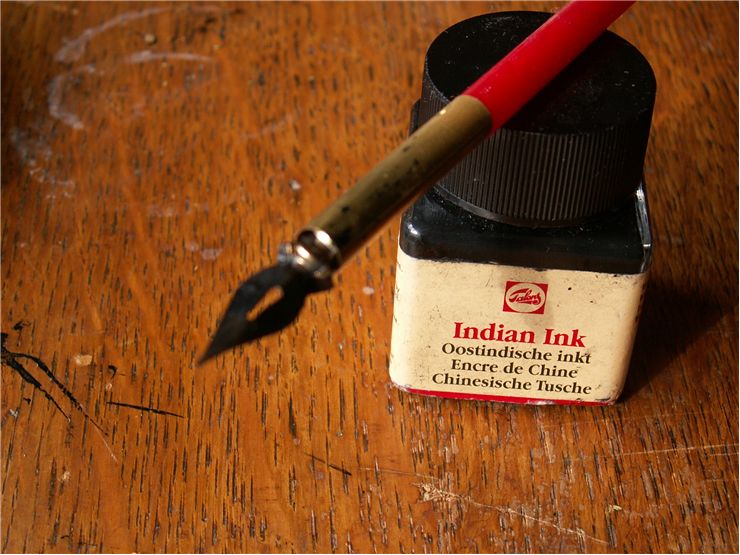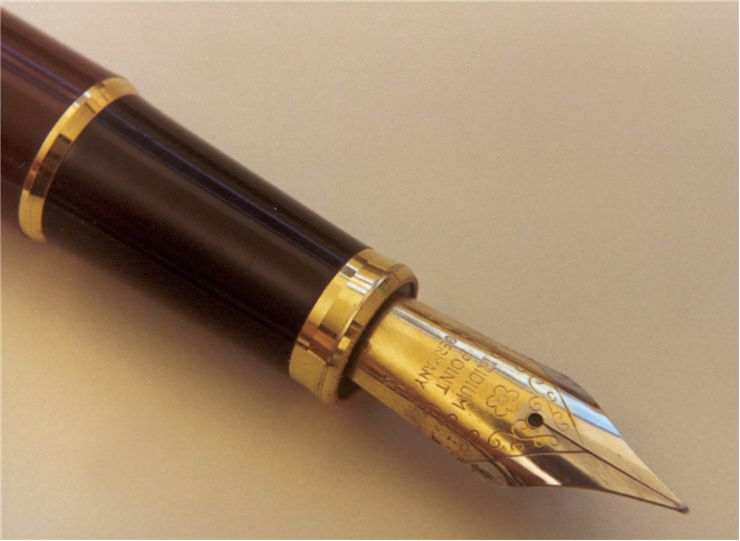History of Dip Pens
A dip pen is a writing tool that consists of two parts: a metal point - a “nib,” and a handle that holds the nib. The metal nib was made of copper and bronze, while today, it is made of steel. It has a slit that leads the ink from a vent hole to the paper and works by a combination of gravity and capillary action. The handle can be made of plastic, metal, glass, and even bone. A dip pen is used for writing and drawing and does not have a reservoir for ink. To be used, a dip pen is dipped in an ink bottle or inkwell (the action from which it got the name). Some people, on the other hand, fill the dip pen with an eyedropper or a syringe.
Metal nibs date from Ancient Egypt, and a copper nib was found in the ruins of Pompei, dating from the year 79. These nibs could not replace reed pens and quills later because of their poor quality.
The Times from 1792 advertised it as 'New invented' metal pens. A metal pen point was patented in 1803, but something still needed to emerge. Bryan Donkin tried to sell his patent for the manufacture of metal pens in 1811, but no one bought it. When the patent expired in 1822, John Mitchell of Birmingham started mass-producing steel pen nibs, and their popularity increased. After all, they were better than quills used then (and for centuries). They lasted longer than quills, were built uniformly so you didn’t have to get used to every new cut quill, and didn’t require skill to sharpen (because they are not sharpened). Pen nibs were easily made to have different characteristics for different uses. Soon, many other manufacturers in Birmingham opened their shops for making pen nibs. By 1860 there were 1000 of them, big and small. In Germany, the first dip pens were made in 1842 by Heintze & Blanckertz of Berlin. By the 1850s, half of all dip pens were made in Birmingham. They were cheap and easily produced and became affordable to those who could not afford writing tools before that. This helped the development of education and literacy.
As we said, nibs are made in different shapes to suit different needs but are mainly made in two styles: broad and pointed nibs. Broad nib, also called broad-edge or chisel-edge, appeared first. It is a stiffer nib with a flat, wider “point.” When writing, the user changes the direction of the stroke and, with that, thin and thick lines. The pointed nib has a sharp point but can also give thin and thick strokes. Thick strokes are achieved with stronger pressure on down strokes, spreading the “tines” of the nib and leaving more ink on the surface. If the nib stands less pressure, tines don’t spread, and the nib writes a thin line. Except for writing, pointed artists and drafters use nibs for sketching, mapping, and technical drawing.
People used various accessories for writing with dip pens to make their writing more enjoyable. A leather writing pad is a surface that allows a metal pen to “dive” into paper and “glide” more easily. A rocker blotter or blotting paper dried the ink and prevented it from smearing the paper on which it wrote. Inkwell was a container made of glass, porcelain, silver, brass, or pewter that held ink into which a dip pen was dipped. It usually had a lid that prevented spillage and contamination of ink. Inkstands hold two inkwells, a place for spare nibs, and stands for pens. Some even had a place for a rocker blotter.


